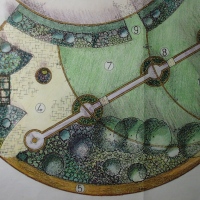 Have you got an exposed garden? In these sites- especially on hillsides or in coastal areas- wind can cause more damage than frost or cold. Think about the best ways of providing some shelter.
Have you got an exposed garden? In these sites- especially on hillsides or in coastal areas- wind can cause more damage than frost or cold. Think about the best ways of providing some shelter.
A solid wall or fence can make wind eddy over the top and can cause strong back-drafts on the leeward side. Instead, filter the wind to slow it down with a hedge or artificial wind break, which will give useful shelter for a distance about ten times its height on the leeward side. Another option- if you have the space- is to plant a shelter belt of trees. If you have views out from the garden that you want to preserve, try creating ‘windows’ in a hedge or other barrier.
Here are four typical problems in windy sites and tips on what to do about them…
1. Growth
Problem: Wind slows plant growth by increasing water loss through evaporation. This can significantly reduce the yields of vegetables.
Tip: protect the vegetable plot with wind break netting or a natural barrier like a hedge.
2. Pollination
Problem: Pollinating insects avoid windy areas.
Tip: To get good pollination of fruit crops grow them against sheltered walls.
3. Leaves and flowers
Problem: Plants with big leaves and those that come into flower early in the season are more vulnerable to wind damage.
Tip: Avoid growing such plants or place them in sheltered spots.
4. New plants
Problem: New plants, particularly evergreens, are especially susceptible to wind damage.
Tip: Protect these plants with wind break netting until they are well establishes and keep all new plants well watered.

Wind break netting can be an effective method of sheltering your vegetables







1 Trackback or Pingback for this entry:
[…] Top Tips for Windy Gardens […]